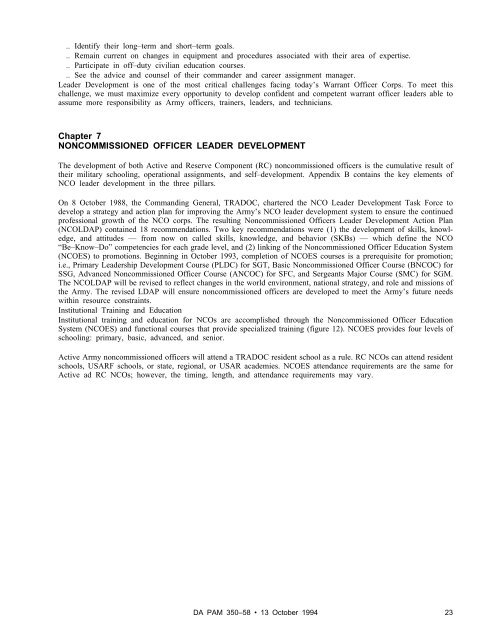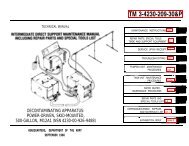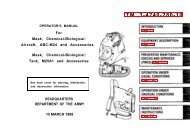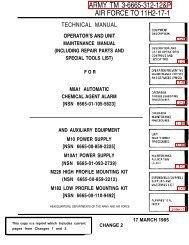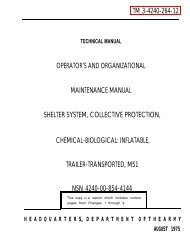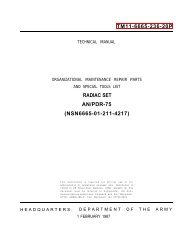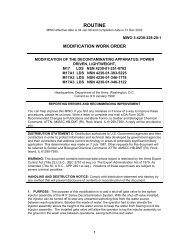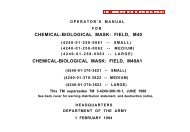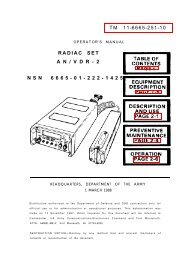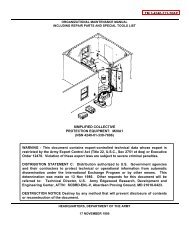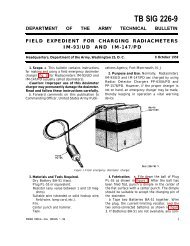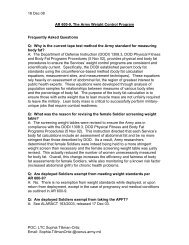LEADER DEVELOPMENT FOR AMERICA'S ARMY
LEADER DEVELOPMENT FOR AMERICA'S ARMY
LEADER DEVELOPMENT FOR AMERICA'S ARMY
You also want an ePaper? Increase the reach of your titles
YUMPU automatically turns print PDFs into web optimized ePapers that Google loves.
.. Identify their long–term and short–term goals.<br />
.. Remain current on changes in equipment and procedures associated with their area of expertise.<br />
.. Participate in off–duty civilian education courses.<br />
.. See the advice and counsel of their commander and career assignment manager.<br />
Leader Development is one of the most critical challenges facing today’s Warrant Officer Corps. To meet this<br />
challenge, we must maximize every opportunity to develop confident and competent warrant officer leaders able to<br />
assume more responsibility as Army officers, trainers, leaders, and technicians.<br />
Chapter 7<br />
NONCOMMISSIONED OFFICER <strong>LEADER</strong> <strong>DEVELOPMENT</strong><br />
The development of both Active and Reserve Component (RC) noncommissioned officers is the cumulative result of<br />
their military schooling, operational assignments, and self–development. Appendix B contains the key elements of<br />
NCO leader development in the three pillars.<br />
On 8 October 1988, the Commanding General, TRADOC, chartered the NCO Leader Development Task Force to<br />
develop a strategy and action plan for improving the Army’s NCO leader development system to ensure the continued<br />
professional growth of the NCO corps. The resulting Noncommissioned Officers Leader Development Action Plan<br />
(NCOLDAP) contained 18 recommendations. Two key recommendations were (1) the development of skills, knowledge,<br />
and attitudes — from now on called skills, knowledge, and behavior (SKBs) — which define the NCO<br />
“Be–Know–Do” competencies for each grade level, and (2) linking of the Noncommissioned Officer Education System<br />
(NCOES) to promotions. Beginning in October 1993, completion of NCOES courses is a prerequisite for promotion;<br />
i.e., Primary Leadership Development Course (PLDC) for SGT, Basic Noncommissioned Officer Course (BNCOC) for<br />
SSG, Advanced Noncommissioned Officer Course (ANCOC) for SFC, and Sergeants Major Course (SMC) for SGM.<br />
The NCOLDAP will be revised to reflect changes in the world environment, national strategy, and role and missions of<br />
the Army. The revised LDAP will ensure noncommissioned officers are developed to meet the Army’s future needs<br />
within resource constraints.<br />
Institutional Training and Education<br />
Institutional training and education for NCOs are accomplished through the Noncommissioned Officer Education<br />
System (NCOES) and functional courses that provide specialized training (figure 12). NCOES provides four levels of<br />
schooling: primary, basic, advanced, and senior.<br />
Active Army noncommissioned officers will attend a TRADOC resident school as a rule. RC NCOs can attend resident<br />
schools, USARF schools, or state, regional, or USAR academies. NCOES attendance requirements are the same for<br />
Active ad RC NCOs; however, the timing, length, and attendance requirements may vary.<br />
DA PAM 350–58 • 13 October 1994<br />
23


